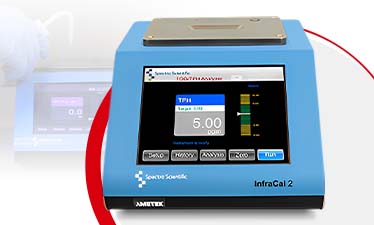Some Interesting Facts About Fingerprints To Know
The investigation of fingerprints holds an immense value in the field of forensics. The careful detection, collection and analysis of fingerprints helps in the identification of a person at the scene of crime or an accident.
Over the years, there have been significant advancements in technologies dedicated for fingerprint detection and development. High-end devices such as Thermal Fingerprint Developer (TFD) enable the development of fingerprints on large quantities of documents and dramatically bring down examination time.
But there’s more to fingerprints than what we assume to know about them. In this blog, some of the interesting facts are enumerated below. Continue to learn till the end to find out about them.
- The journey of fingerprint formation
It is the ridges of the fingers that create fingerprints in weeks 10 to 15 of the fetus' time in the womb. Prior to this period, the fetus has volar pads on its fingers which are smooth pads caused by the development of connective tissues and blood vessels.
During week 10 – 15, these pads are absorbed back into the hand, as the growth of the hand continues. This is the time when the ridges start to appear on the pads which over time shall become fingertips. The timing of when these ridges appear influences which pattern the fingerprints will end up with.
A whorl pattern is gained when the volar pads are still very prominent. Whereas a loop pattern happens when the volar pads are less exposed and a volar pad which has almost reabsorbed by the time it forms ridges gives an arch pattern. These patterns are impacted by your parental genes, which is why the family members’ patterns are likely to be similar.
The unique identifiers are produced by the uncommon effects of the surroundings, such as the movement of the fetus inside the womb, the blood pressure of the pregnant person and the amniotic fluid density of the amniotic fluid.
- Varied types of fingerprint patterns
As mentioned in the earlier point, fingerprints tend to have different types of patterns based on the volar pads development and also paternal genes. Primarily, there are three types of patterns found in fingerprints and they are -
Whorls - these are spherical or circular patterns that come in many varied forms and make up about 35% of fingerprints.
Loops - these can point in the direction of either the little finger or the thumb and are the most general type of fingerprint at 60% occurrence.
Arches - this is a unique type of pattern that appears in wave-like shape and accounts for only 5% of the world’s population.
- Removal of fingerprints is almost impossible
Crime fiction stories have more stereotypically mentioned the removal of fingerprints for years now. However, in reality, it is almost impossible to remove fingerprints permanently since the pattern of the fingerprints is much more than skin-deep.
This is why fingerprint evidence is still very much valuable in crime investigations. If somehow a person manages to remove fingerprints, the identification of the person can be done with palm and even sole prints.
There is more to fingerprints than what we know about them.








